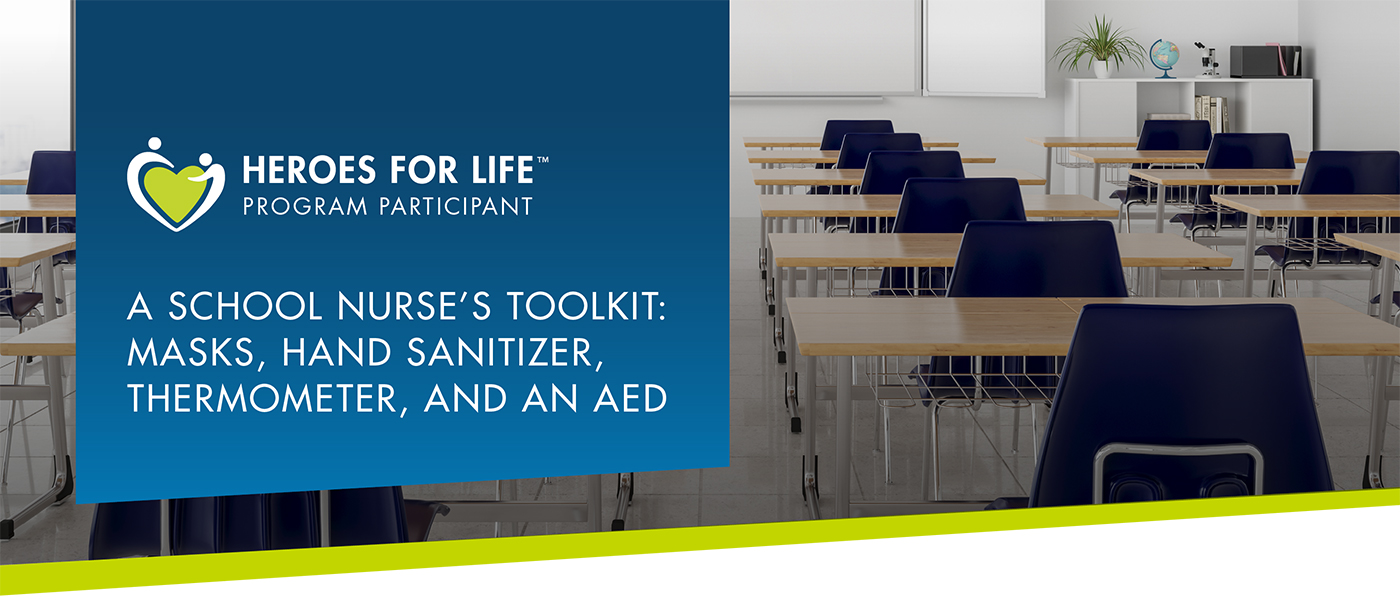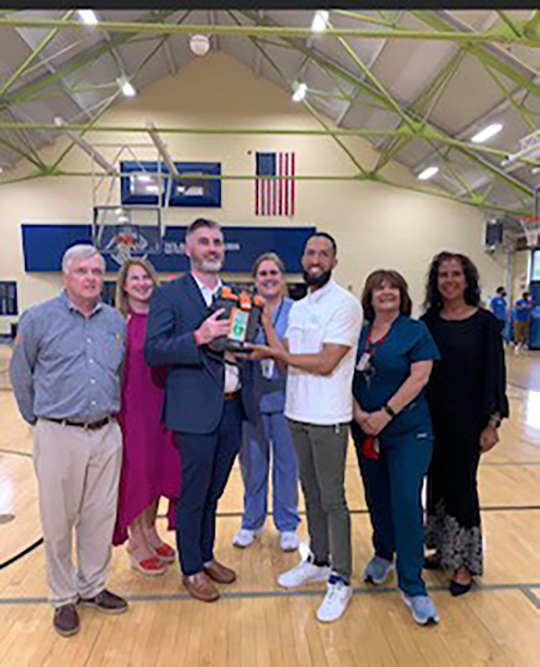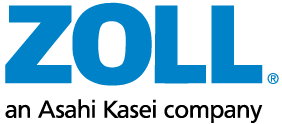
As one of only two school nurses serving a student population of nearly 600 kids, Doreen Allen Kellum takes an AED — along with a thermometer, ice packs, facemasks, and hand sanitizer — whenever she tends to a sick child in a classroom at the Downey School, a K-5 elementary school in Brockton, Massachusetts.
"I've been a school nurse for 24 years," says Doreen. "Back in the day, we didn't have this technology. You relied on your knowledge, called 911, and hoped they made it. Today, I bring the AED whenever I have to treat a child."
And she'd know its value better than most. She's had to use it on students twice in just over a year, most recently this past April.
“Today, I bring the AED whenever I have to treat a child.”
— Doreen Allen Kellum
Challenging health issues
Nearly one third of the students at the Downey School have high needs, which means Doreen and her coworker Colleen Elchami must be prepared for a variety of medical issues. Recently, an 11- year old student with a severe seizure disorder was having a difficult week. Seizures early in the week sent him home, but he was back in class by Friday, ready to learn. As a precaution, his teacher taught him in a classroom close to the nurse's office. Just after midday, the teacher notified Doreen that the student was having another seizure that had already lasted for one minute. When she arrived in the classroom, she gave the child fluids and at five minutes administered medication, per the child's medical plan. Unfortunately, the student became unresponsive and began turning blue. She immediately called 911.

Colleen Elchami, another nurse at the Downey school, opened the ZOLL® Powerheart G5 automated external defibrillator (AED) that Doreen brought with her to the classroom and affixed the pads to the student's chest and back. Doreen followed the AED instructions and compressed the CPR puck integrated into the pads on his chest. "The AED talked me through the whole thing. It told me that I needed to do more to help him." When Doreen wasn't pressing hard enough, the AED audibly instructed her to "Press Harder." The AED analyzed the student's heart rhythm but didn't call for a shock. Instead, it instructed the rescuers to continue high-quality CPR. After 8 minutes he opened his eyes a bit and no longer appeared listless. His heart rhythm was back to normal and he didn't need to be intubated when the EMTs arrived to transport him to the hospital. Following a short stay in the hospital and some medication adjustments, he was back in school the following week.
An invaluable tool
Doreen can't overstate the value of the AED and tells her CPR students that it never hurts to attach a patient to an AED. It can only help. "Even as a CPR instructor, I think you step outside of yourself in that moment you're doing CPR. The Powerheart® G5 defibrillator kept me on track until it didn't need me. It told me how I was doing and kept assessing the student. It didn't tell me to stop until the student no longer needed my help." With four AEDs strategically placed throughout the building, Doreen and the staff at the Downey School have peace of mind knowing that they're prepared for whatever medical emergencies may arise.
